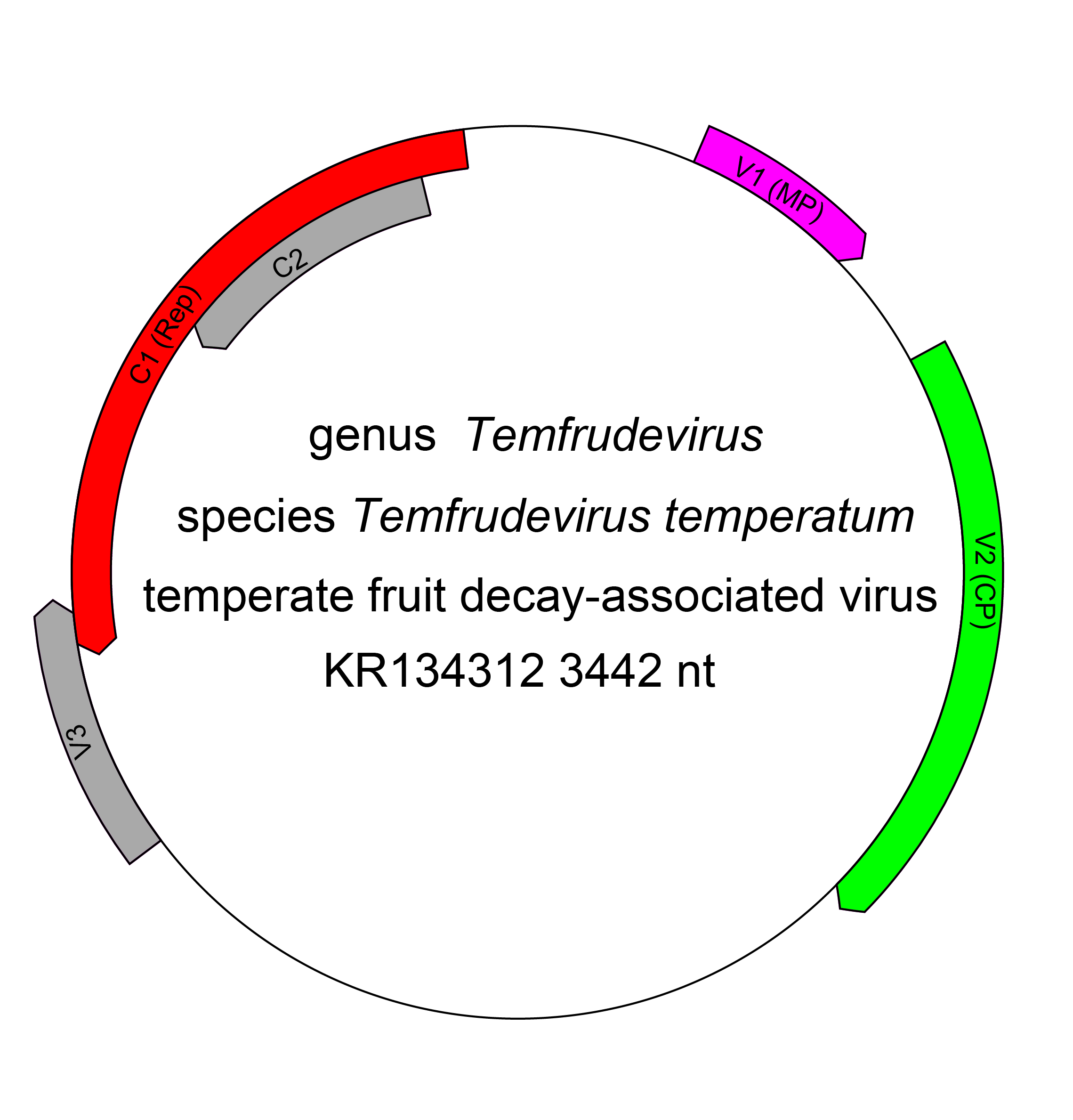Family: Amesuviridae (Interim Report)
This is a summary page created by the ICTV Report Editors using information from associated Taxonomic Proposals and the Master Species List.
Edited by: Luisa Rubino
Posted: October 2024
Summary
The family Amesuviridae includes ssDNA viruses of plants (Table 1 Amesuviridae). The genomes are circular and encode at least a putative movement protein, coat protein, and replication-associated protein. The family Amesuviridae was established in 2023 (Master Species List #38).
Table 1 Amesuviridae. Characteristics of members of the family Amesuviridae.
| Characteristic | Description |
| Example | temperate fruit decay-associated virus (KR134312), species Temfrudevirus temperatum, genus Temfrudevirus |
| Virion | Not known |
| Genome | ssDNA, circular, 3–5 ORFs, 3.4 kb |
| Replication | Rep proteins with HUH endonuclease and SH3 superfamily helicase domains |
| Translation | Not known |
| Host range | Plants |
| Taxonomy | Realm Monodnaviria, kingdom Shotokuvirae, phylum Cressdnaviricota, class Arfiviricetes, order Mulpavirales: 2 genera and 2 species |
 |
| Figure 1 Amesuviridae. Genome organisation of temperate fruit decay-associated virus, a member of the family Amesuviridae. Boxes indicate open reading frames as annotated on GenBank accession KR134312. |
 |
| Figure 2 Amesuviridae. Taxonomy of the family Amesuviridae. |
Derivation of names
Amesuviridae: from América do Sul or America del Sur (South America in Portuguese and Spanish, respectively), the continent in which members of the family were first described; the suffix -viridae for family taxa
Temfrudevirus: from temperate fruit decay-associated virus: the suffix -virus for genus taxa
Yermavirus: from yerba mate-associated circular DNA virus: the suffix -virus for genus taxa

